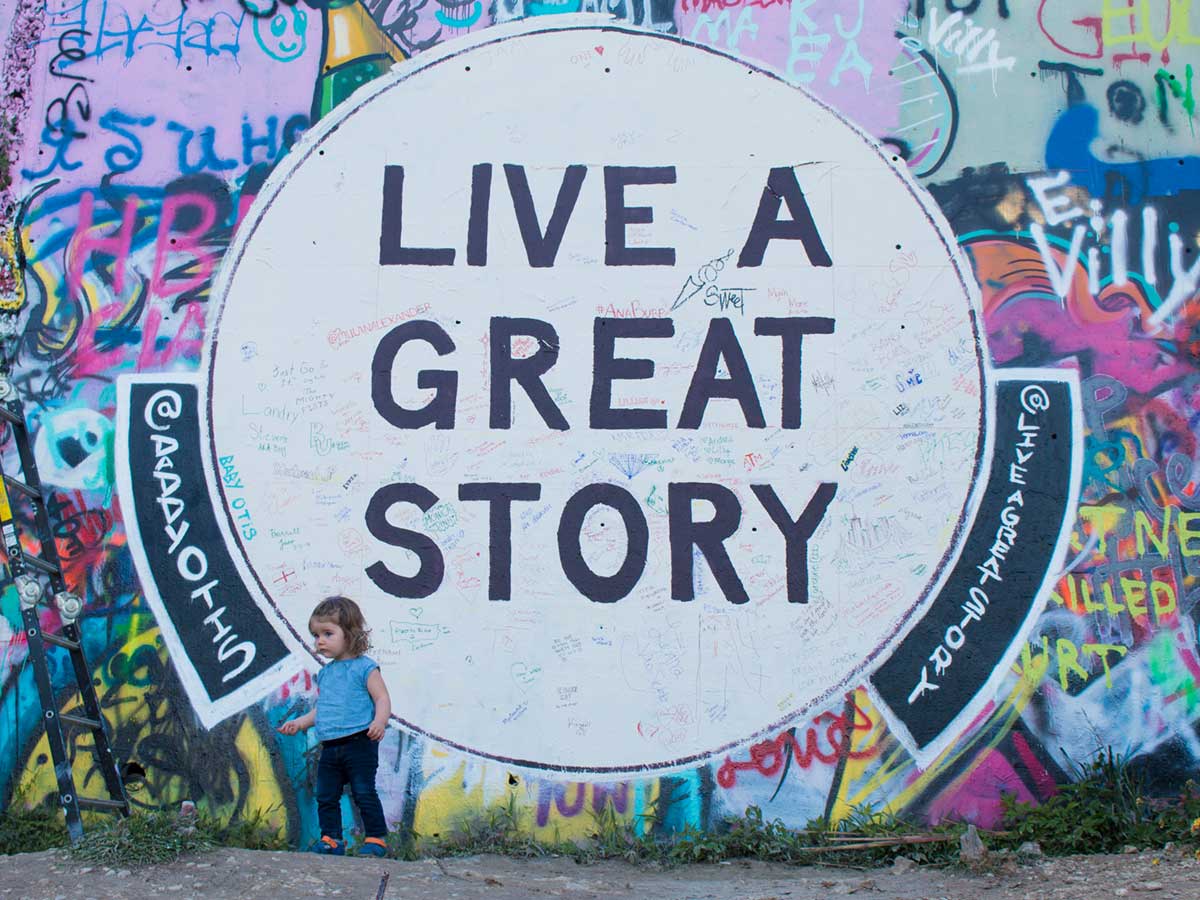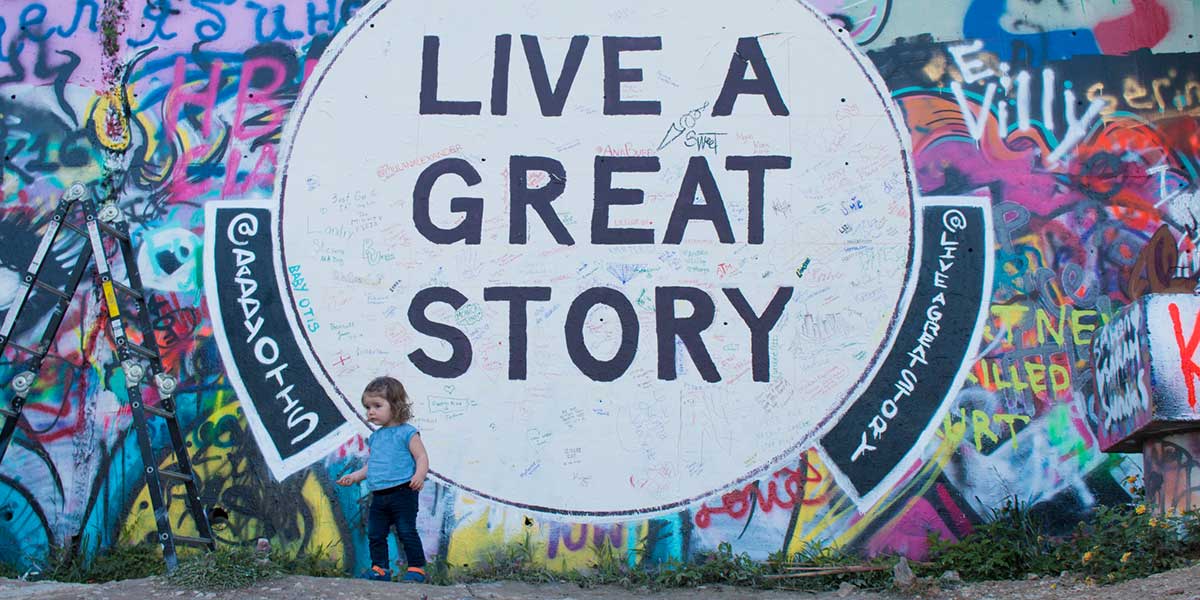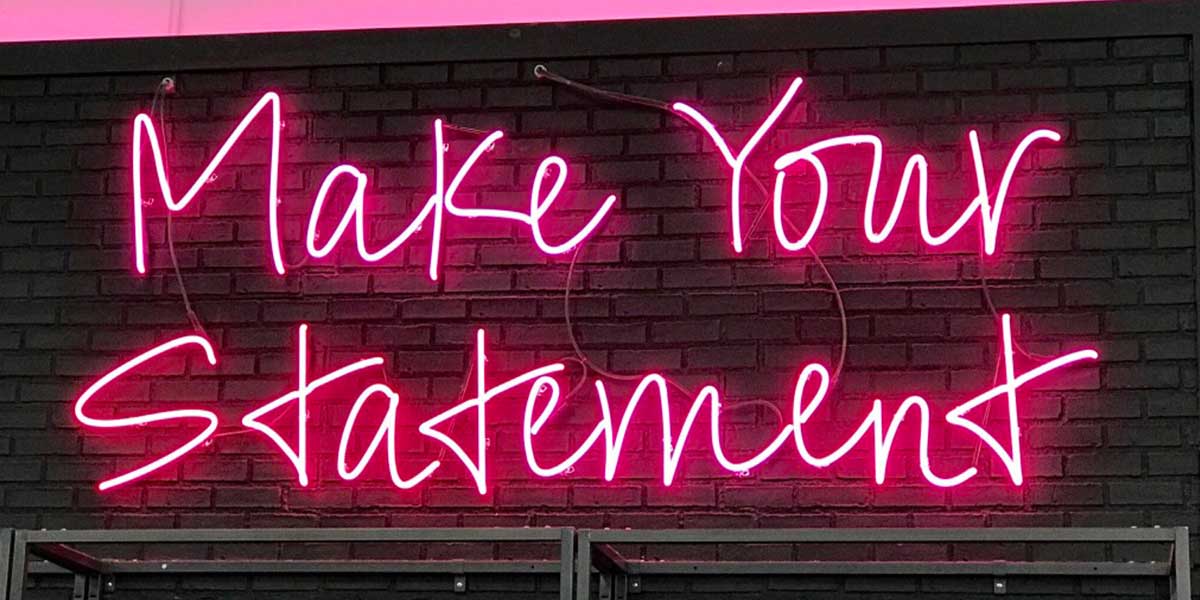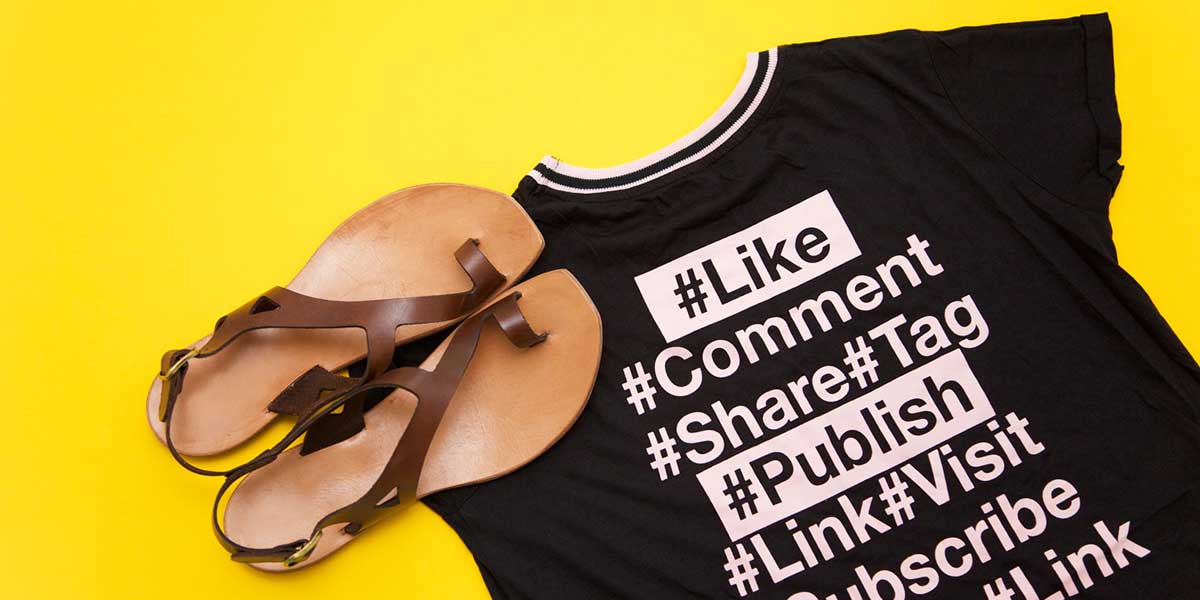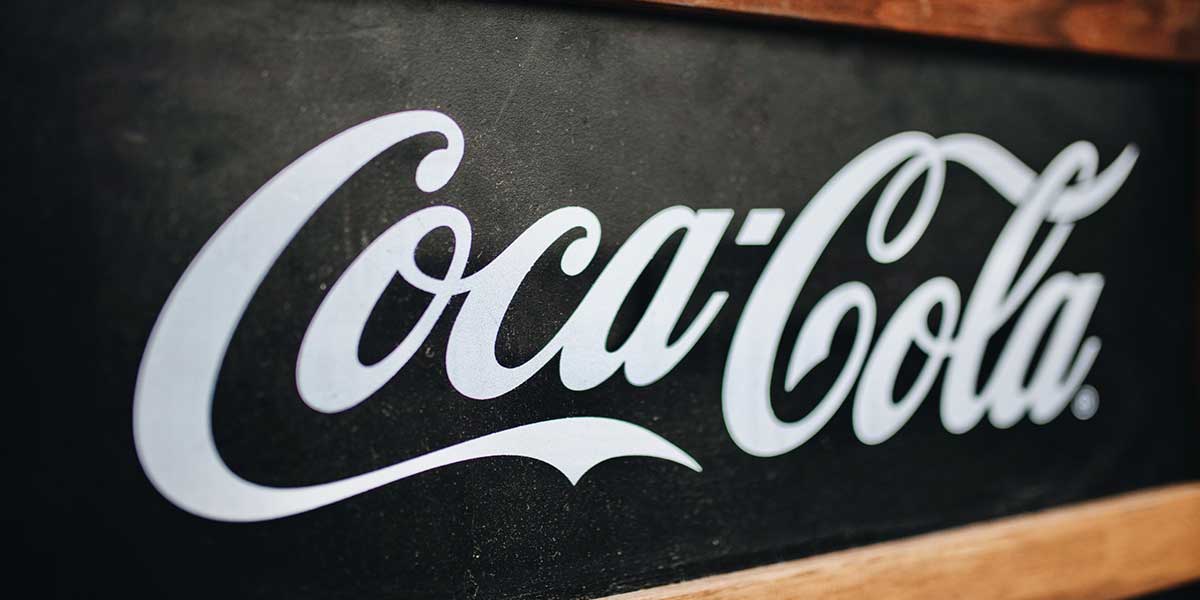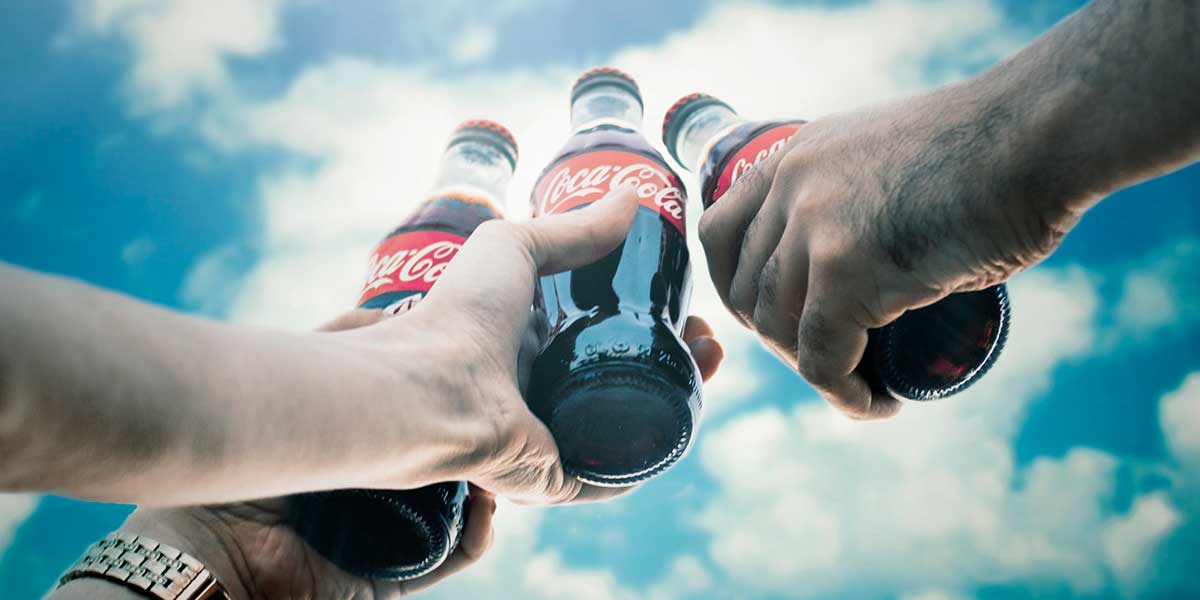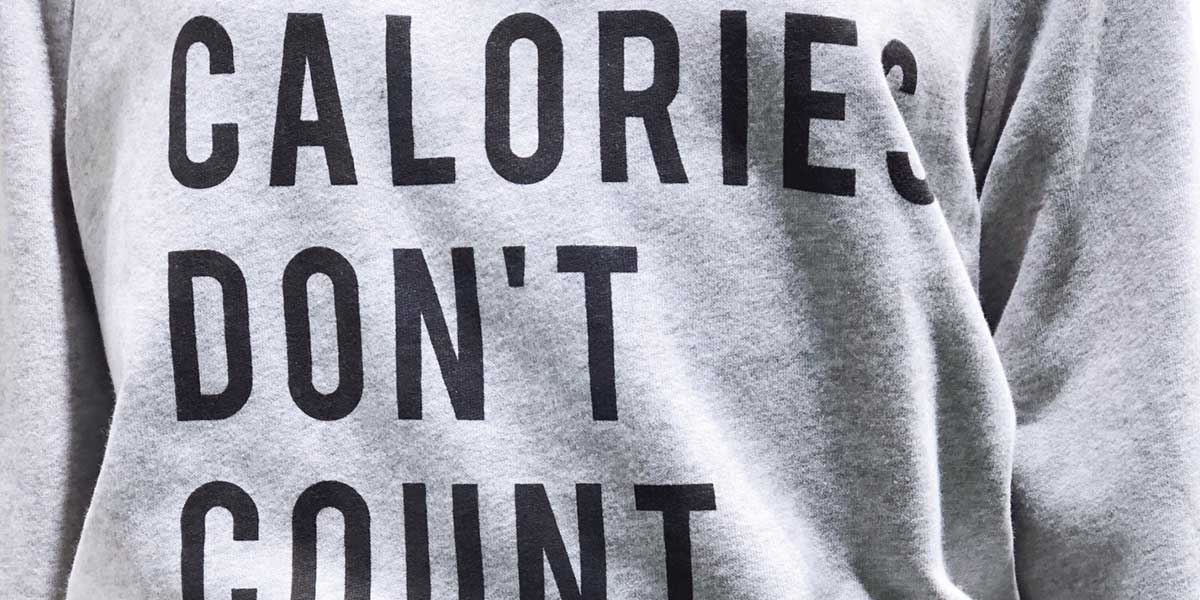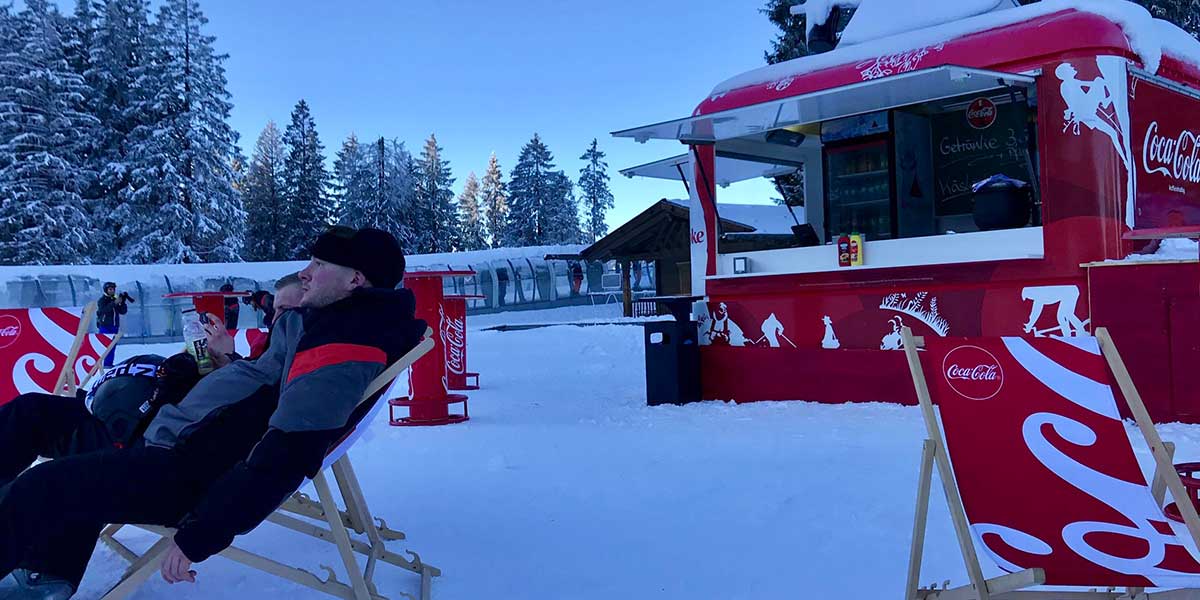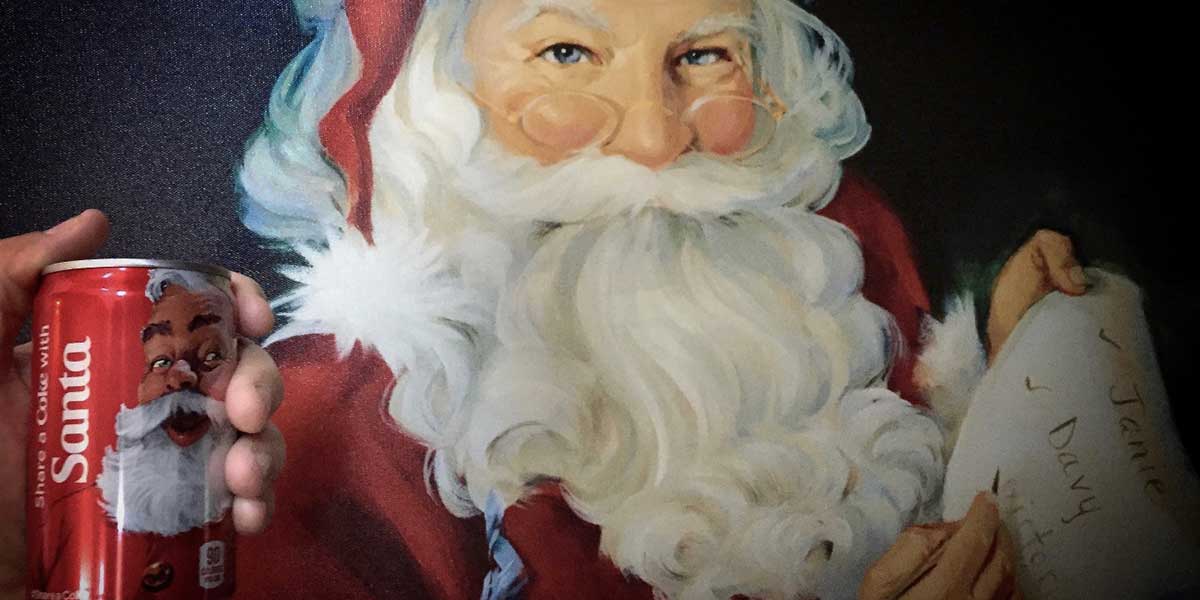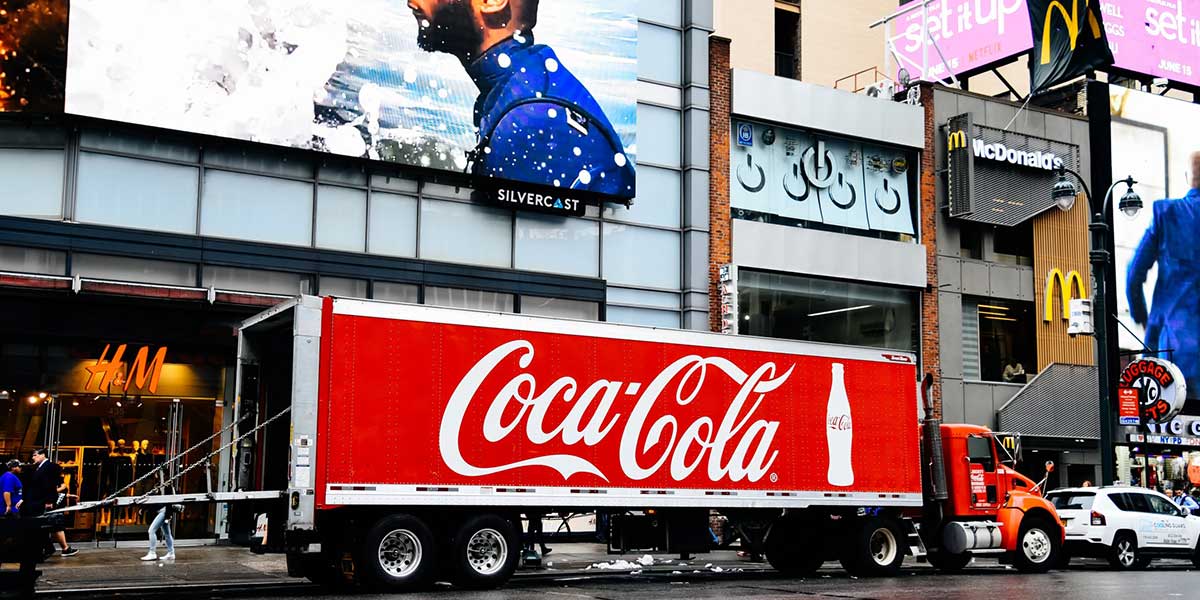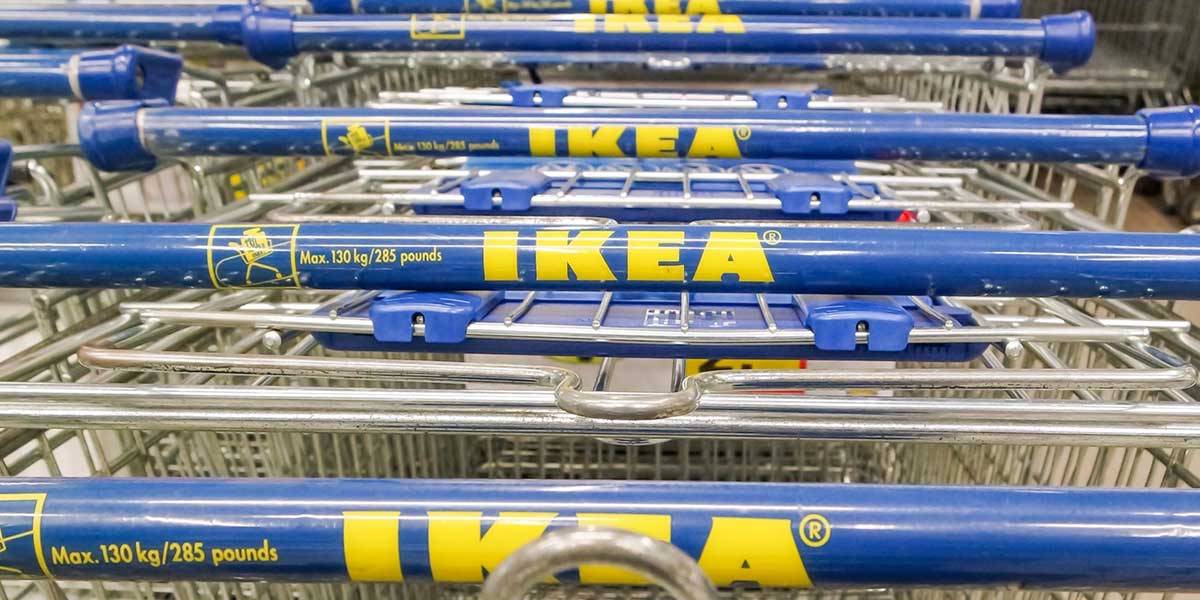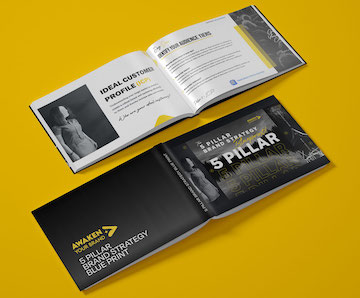“The value of a good story is priceless” (Hermansson 2008).
What is a brand story, why do you need one, and how do you tell a good one?
We’ll get to that.
But first, a word of warning: today’s consumers can see through thinly veiled marketing.
If your content is little more than an ad for your product, your customers will tune out, and the deeper story you want to tell about your company, your values and your mission, will fall on deaf ears.
With that in mind, we’d like to explore brand story in depth in this post. But don’t worry, you’ll come away from this read with valuable intel into the brand storytelling process. In fact, by the end of this post, you’ll know precisely which types of content you should create if your goal is to craft a compelling brand story.
Let’s get started.
The Importance of Brand Storytelling
Think about it…every brand has a story. Coca-Cola has a story. Nike has a story. Domino’s has a story. The variable you can control, as a business owner, is whether that story is written consciously or unconsciously.
Another way to think of this: will your brand story be written by you, or by consumers? Or, worse, competitors? Even if you offer an indispensable product or service, have impeccable customer service and have rock solid staff, allowing your story to take form haphazardly is a poor strategy.
Indeed, every brand has a story, and some stories are better than others.
Unlike people, who can take proactive steps to change their personalities or put a positive spin on their back stories, large companies can’t change on a dime. This simple fact underscores the importance of consciously molding your brand storytelling from the start.
But companies do have an advantage over people: a brand can shape and hone their stories, in their own time. A well-formed brand storytelling strategy can equip you with powerful marketing materials that will help you stand out from your competitors.
Of course, it’s not easy to boil down your essence to a single tagline or slogan, nor are we suggesting that your approach should be quite that narrow. But there are several businesses that have succeeded in crafting striking, enduring brand stories.
You can too.
It all starts with having a firm understanding of why brand storytelling is so important in the first place. There are five main reasons.
#1 A Brand Story Gives You Focus
When you set out to craft a brand story, a necessary part of that process is filtering out ideas and concepts that don’t resonate with your brand. Naturally, creating this content requires quite a bit of work.
You can’t afford to create messaging that doesn’t speak to who you are.
Think of the Dove brand, owned by Unilever. Their tagline, Real Beauty, speaks to who they are and what they stand for. Their messaging doesn’t go on and on about the virtues of soap. Instead, their messaging speaks directly to their target audience.
But to come up with that tagline, someone at Dove had to sit down and think about who they are, what they want to sell and what they want to mean to the consumer.
We can see that a brand story should be mutually beneficial. Your brand storytelling should not only prop you up nicely, it should also speak to your target audience. The goal is to help your ideal customer find a company—you—that exists to provide them the products they want or need. Bonus points if your company holds values that resonate with said consumer.
#2 A Brand Story Helps You Build Affinity
Speaking of which, conveying your values is a stellar way to show customers that you’re more than a faceless corporation. The truth is, consumers these days rarely want to be sold to. The days of having a captive audience on TV or radio are long over. Consumers are fleeing to ad-free platforms like Spotify, Netflix and Amazon Prime.
Plus, as mentioned, today’s consumers want to buy from companies that share their values.
This is particularly true in the millennial demographic, which is just coming into their purchasing power. Through clever content marketing, you can subtlety—or not so subtly—convey to consumers what you believe in.
#3 A Brand Story Helps you Stand Out
If you create content for brand storytelling purposes—and we’ll get into how to do that later it his post—one benefit you can bank on is that it will help distinguish you from your competition. In a crowded marketplace, brand recall is essential.
In 2009, Domino’s faced a brand crisis. They were one of the most recognizable fast food pizza brands, but there was a problem: word on the street was that their pizza just wasn’t very good. Worse, the pricier competitor, Papa John’s, was perceived to be of higher quality—and Papa John’s was raking in the proverbial dough despite charging more for their product.
Domino’s turned things around with a bold advertising campaign that basically said, We know we’ve been slipping, but we’re dedicated to quality now.
The campaign, coupled with revamped recipes, worked. By taking this bold approach, Domino’s told a new brand story. They weren’t afraid to take risks. They weren’t afraid to change. They were a brand that could evolve. More info here.
In other words, they differentiated themselves and recaptured consumer attention. For more information on how the clever folks at Domino’s have used modern communication mediums to their advantage, see the case study Fight Viral with Viral: A Case Study of Domino’s Pizza’s Crisis Communication Strategies.
Differentiation is even more important if you operate in a crowded space. Do you develop apps? Then pay attention. Millennials have been bombarded by products A, B, C, D and E—that all do the same thing. It’s the brand that takes chances, that’s not afraid to stand out, that will succeed.
#4 A Brand Story Gives you a Strategic Advantage
When a marketplace becomes crowded, and customers face multiple marketing messages, they sometimes throw their hands up and go with gut instinct, or intuition. The brand that has taken the time to craft a brand story will come out on top in this environment. Busy, harried, customers are not driven by rational analysis. They’re going by how things make them feel. Largely, how a customer will feel about you will depend on your brand storytelling.
Fast food restaurants like McDonald’s benefit from their image as the parent-friendly place to get quick, inexpensive food. They cater to busy, fatigued parents, promising a hassle-free dining experience on the go. However, as health concerns about fast food mount, it will be interesting to watch how their brand messaging changes to counter this threat. Will parent’s attitudes toward fast food restaurants change significantly if the obesity epidemic progresses? How do you think these corporations will respond?
In any event, established brand story translates into a concrete advantage over competitors who put no thought into how customers perceive their brands.
Amazon started as an online bookstore ran more or less by one person. Today, it’s just that place where people go to shop online. But it didn’t become so overnight. Amazon has taken pains to paint themselves as an indispensable service that’s not afraid to take chances. Like Google, Amazon is always trying new things. Heck, they even have a branch dedicated to finding quality screenplays for their Amazon Prime platform. They also have a division dedicated to providing entrepreneurs with a means to produce print-on-demand shirts.
Amazon isn’t just a bookstore anymore, they’re a massive operation, and their brand story reflects this. This story insulates them from upstarts who would try to steal their thunder.
#5 Brand Stories Give You Connections
With a robust, evolving brand story, you can forge a lasting connection with consumers. Your origin story, for instance, establishes the emotional trajectory of your brand. If your origin story is relatable, people will remember it. But a relatable story will also make them more likely to cozy up to your brand over colder, more distant brands.
When a person meets another person they might want to get to know better, they often ask, What do you do? Where are you from?
The reason we do this is to find common ground. Help consumers come to trust your brand by showing them where you have common ground.
But it’s not just emerging brands that can benefit from brand storytelling. In the next section, we’ll examine one of the biggest brands in the world, and how they deliberately use brand story to fortify their already strong reputation.
Brand Storytelling Case Studies
In this section, we’d like to highlight three case studies. The first two illustrate how an established brand can ensure an enduring legacy. But the lessons learned within also apply to a startup, perhaps even more so as you can apply these strategies from the outset. The third case study provides an example of how you can use emerging technologies to speak with a unified company voice that will help reinforce your emerging brand identity.
Coca-Cola’s Journey
In the paper, Brand Storytelling: The Case of Coca-Cola’s Journey Corporate Website, the author makes the case that Coca-Cola has bolstered its already strong reputation by providing a dynamic, robust corporate website. This website features several types of consumer-facing content that has helped Coca-Cola remain relevant amid growing concerns over one of their product’s main ingredients: high fructose corn syrup. Though this ingredient is being met with increasing skepticism, Coca-Cola remains one of the most popular soda brands in the world.
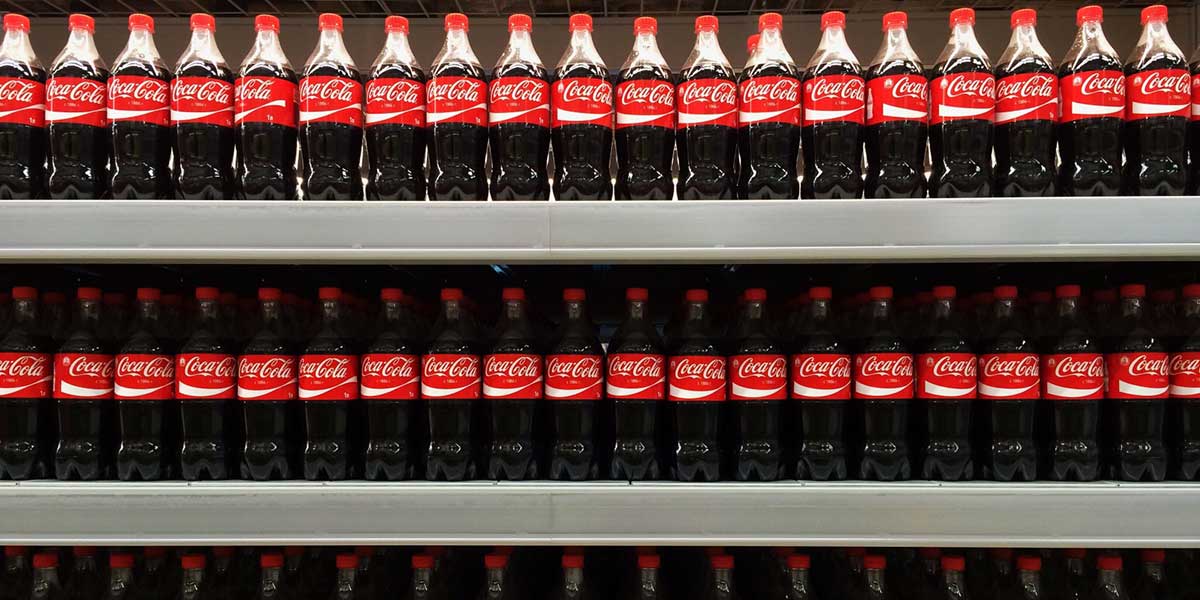
The full paper is well worth a read, but in this section, we would like to highlight some of the main points. Our goal is to illustrate how even established brands can benefit from a strong brand story. But if you’re just starting out, don’t fret. This section contains actionable information you can use right now to improve your content.
In 2012, Coca-Cola, one of the most valuable brands in the world, took proactive steps to increase engagement with customers and fans. This initiative took shape as Journey, a corporate website featuring an online magazine. It was to be ‘highly visible’ and ‘sharable’—and it was. Of more interest to us, however, are the types of content that this digital magazine published.
It’s safe to say, after all, that Coca-Cola has the resources to do this right. Therefore, the content formats they used in Coca-Cola Journey should certainly be good enough for us.
The Content
Coca-Cola Journey quickly gained traction with customers by featuring several different types of content. These content types are:
- The Civic Post
- The Makes Me Smarter Post
- The Anchor Camaraderie Post
- The Community Connection Post
- The Social Identity Post
- The Utilitarian Post
- The Inspirational Post
- The Co-Production Post
- The Timeout Post
Note: while we’re using the term ‘post’ to describe these content types, the actual content may be written posts, videos, user-submitted photos or other forms of content.
#1 The Civic Post
The civic post aims to provide solutions to problems that society faces as a whole. This type of post is particularly important to Coca-Cola as leading health experts have come down on soda consumption as one of society’s worst habits. Coca-Cola has, in several posts, TV spots and online advertisements, presented its product as a treat that has a place in the average person’s daily caloric intake.
By promoting a CICO-centric viewpoint—calories in, calories out—Coca-Cola has made the case that their product can fit into a healthy lifestyle.
Arguably, this strategy has worked staggeringly well over the last few years, as 2018 was the first year since 2011 that consumption of soda did not fall. However, new evidence suggests that hormones like insulin play a large role in metabolic health. Moreover, fructose, the key component of high-fructose corn syrup, tends to get turned into fat by the liver. In the years to come, Coca-Cola may be hard pressed to continue their CICO narrative. Stay tuned to Coca-Cola’s messaging to see how they adapt.
Here is an example from their website:
How many calories are there in a 330ml can of Coca‑Cola original taste?
139 calories. This represents 7% of the calories an average adult should eat and drink in a day to maintain a healthy, balanced diet. This is known as the daily reference intake (RI).
Did you know? In 2014 Coca-Cola European Partners began using the Government’s front of pack colour-coded nutrition labelling scheme, showing the calories and sugar in each serving of our drinks.
#2 The Makes Me Smarter Post
These posts are engaging, easy to digest, and repeatable. Consequently, they’re often in video format. When done right, these posts can easily go viral. The main goal of these posts is to educate in a fun way. They can educate about the history of your product, or they can educate about some product-adjacent topic. Consumers like to share these posts as doing so reinforces their self-image as someone who likes to help other people by educating them.
The Journey portal provides educational content centered around food, music, videos and recipes. There are thousands of such videos on the site, and they all serve to educate consumers.
#3 The Anchor Post
These posts, or videos, employ a basic tenet of psychology. If you have a human face delivering content, people will pay attention. Coca-Cola uses these posts or videos to help personalize their brand. They’re a great way to inject personality. For best results, your anchor should reflect the characteristics of your ideal customer. So, for instance, if you sell a fun gag gift, your anchor should not be a stodgy 70 year old man.
Coca-Cola’s brand stories are all centered on the concept of shared happiness, and that message is conveyed by young, hip, fit individuals. After all, part of the company’s brand storytelling is that they provide a product that can be part of a healthy lifestyle.
#4 The Community Connection Post
These posts exist to tell fans about places where they can interact with other fans. These posts are crucial if one of your objectives is to humanize your brand. They shouldn’t just be links to your online forum, though. They should demonstrate, with examples, how fans of your brand can benefit from communicating with other fans.
The Journey portal is a digital magazine first and foremost. This means that community is built right into it. There are many opportunities for users to connect across the site. Naturally, Coca-Cola also maintains a presence on the largest social media networks, where they can share links to the Journey site.
#5 The Social Identity Post
In a similar vein, we find the social identity post. You can think of these posts as offshoots of community connection posts. They further demonstrate to consumers how forging emotional connections with other fans can improve their lives. Like anchor posts, these posts should be persona-driven. That is to say, the authors of these posts or the hosts—if video—should exhibit the features of your ideal customer.
The Journey site contains numerous stories that center around the idea of shared happiness. Numerous blog posts share stories of consumers enjoying each other’s company, cokes in hand.
#6 The Utilitarian Post
These posts encourage consumers and fans to share their experiences with the brand. The point is to demonstrate the utility of your product and service in a way that will appeal to consumers. However, it’s important to keep in mind that these posts should not come off as a list of testimonials. You must take care to convey the information in a witty, informative way that is story-driven.
Coca-Cola puts great emphasis on allowing users to share stories about how their product brightens just about any social event.
#7 The Inspirational Post
This is the type of post that most brands rely on to foster good will with consumers. However, over-reliance on the inspirational post can backfire. If this is the only type of post you publish, readers will tune out.
Used sparingly, however, the inspirational post can be quite powerful.
Inspirational posts make readers feel good about themselves and life in general, and inspire them to achieve the same results as the people they’re reading about. The folks behind Coca-Cola are masters of this type of messaging. The Unbottled category on its website is more or less dedicated to this type of story. At the time of the study, the Journey site contained 6,880 videos, 475 articles, 23 downloadable images, 90 blog posts and 22 third-party articles that could be considered inspirational.
#8 The Co-Produced Post
Similar to the utilitarian post, the co-produced post is a joint-venture between the brand and consumers. These posts are story-driven and usually serve to demonstrate how the company’s products can improve a customer’s life. Subtlety is the key to pulling these off. If you’re too blatant in your messaging, readers will tune out.
Coca-Cola, via their Journey web portal, regularly invites consumers to participate in the creation of their brand content as co-producers. For instance, users can upload pictures showing themselves having fun while drinking Coca-Cola products.
#9 The Timeout Post
Most of the content types on this list serve to humanize the company. But the timeout post exists to demonstrate the humanity of consumers. These posts show how fans of the company spend time relaxing. Then, they link those activities to the company’s mission and vision statements in some way. Thus, they create a positive association in the mind of the reader.
The aforementioned Unbottled category contains videos of users showing off their ‘happy places,’ those places they go to relax in when not at work. This aligns nicely with Coca-Cola’s raison d’exister—their reason to exist.
If you, say, manufacture and sell guns, then your timeout posts would likely not be focused on consumers having fun. Instead, you might show your customers cleaning and polishing their firearms. Then, you could quite easily find ways to link this to your mission of providing safe, reliable firearms for home defence.
Another Way in Which Coca-Cola Is Protecting Their Legacy
In the paper, Retail Spectacles and Brand Meaning: Insights from a Brand Museum case study, the authors explore how Coca-Cola is creating positive brand story with their World of Coca-Cola museum. This museum is what’s known as a ‘retail spectacle.’ It’s a structured retail environment in which a large emphases is placed on entertainment. Presumably, consumers come to the museum to learn about the history of Coca-Cola, but, as you might expect, the museum contains a gift shop.
Perhaps more importantly, the museum gives Coca-Cola a means to shape the narrative surrounding their history and their products. The museum cost only $15-million to build yet attracts over 1.5-million visitors per year.
According to the paper, the museum humanizes the Coca-Cola brand by putting an emphasis on the people who made the brand what it is today.
$15-million dollars? 1.5-million visitors per year?
What’s the lesson for the other 99% of business owners who don’t have that kind of cash to throw around?
While we can’t all build monuments to our own companies, there is an important takeaway from this paper: there are less expensive ways to build brand experiences. You can, for instance, hold events in large cities. You can run your own webinars. You can have meetups where you give gear to passionate brand ambassadors. You can absolutely create your own spaces in which you can tell the story as you see it, to a captive audience.
And you should.
Using Chat to Improve Brand Perception
In this case study, by Radial, a leading apparel brand improved their conversion rate significantly by adding chat to their site. Why might this be? According to the paper, chat:
- Allowed the brand to provide faster service
- Allowed the brand to reduce other service inefficiencies
- Allowed the brand to address customer concerns promptly, thereby reducing friction
But there might be something else at play here, too. You see, by using chat, and by training your employees to use your company ‘voice,’ you can project brand identity and build your brand story. You can use chat as a means to subtlety educate your customers about who you are and why you share the same values they do.
Be Human
A solid brand story can do much more than connect you with your ideal customers. It can also elevate you above the noise and can anchor you in your space. In today’s complex, rapid-fire business environment, marketing is no longer the only factor that differentiates. For the most part, today’s customers prefer to deal with companies that aren’t afraid to show their humanity—they want to do business with companies that can show that they care about more than the bottom line.
With a smart content plan, using the content types listed above, you can do just that.
We’re not suggesting that yourbrand storytelling be centered around some naive belief that you can ‘save the world’—though this isn’t as cliched as it used to be. What matters is that your mission is supported by action. If, for instance, you’re out to create the most eco-friendly way to roast coffee beans, then show us how you’re going about that. Don’t just talk about it.
The difference between a strong brand story and marketing spiel is action.
A few companies that are doing it right:
- Always, with their #LikeAGirl campaign
- IKEA, with their substantial investments in sustainability
- Unilever, and their commitment to their Sustainable Living Plan
- Panasonic, by moving their U.S. headquarters from Secaucus, New Jersey to Newark so that employees wouldn’t need to drive as far to get to work.
Always #LikeAGirl campaign
One of the best ways to make your brand more human is by telling compelling stories. Storytelling is the most ancient communication skill. In times long past, elders taught youngsters important life skills by telling them stories and cautionary tales. Consequently, we have ingrained in us an automatic response to a good story. We listen.
So when thinking about content creation for story branding purposes, ask yourself, what story do you want to tell?
The stories you tell through your blog and other channels give readers important clues about the soul of your operation. Finally, if your goal is to build an enduring brand story, then you should be bold. In a crowded marketplace where your competitors are focusing on efficiency, take some time to craft powerful stories about you, your brand and what you stand for.
